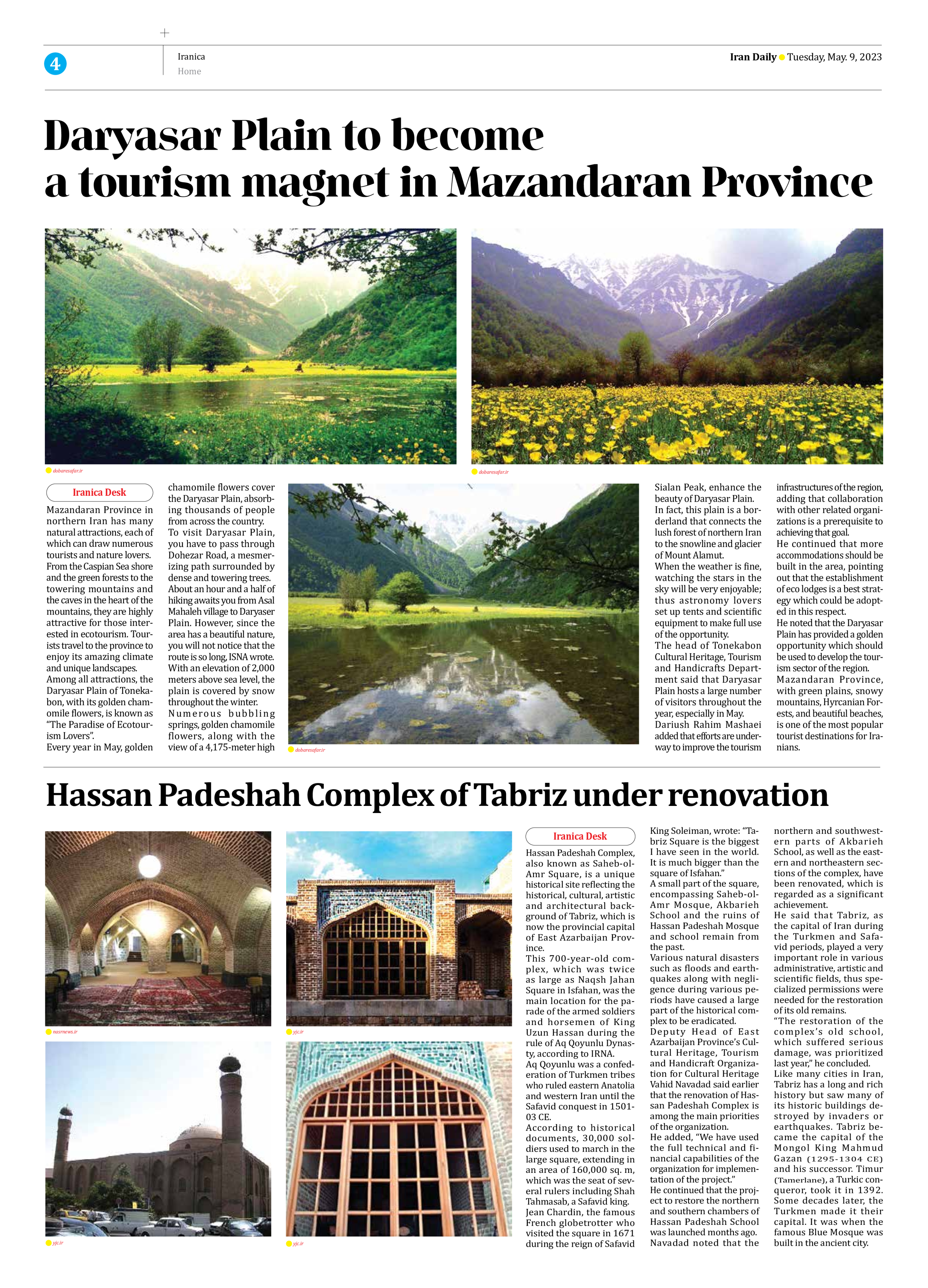
Hassan Padeshah Complex of Tabriz under renovation
Hassan Padeshah Complex, also known as Saheb-ol-Amr Square, is a unique historical site reflecting the historical, cultural, artistic and architectural background of Tabriz, which is now the provincial capital of East Azarbaijan Province.
This 700-year-old complex, which was twice as large as Naqsh Jahan Square in Isfahan, was the main location for the parade of the armed soldiers and horsemen of King Uzun Hassan during the rule of Aq Qoyunlu Dynasty, according to IRNA.
Aq Qoyunlu was a confederation of Turkmen tribes who ruled eastern Anatolia and western Iran until the Safavid conquest in 1501-03 CE.
According to historical documents, 30,000 soldiers used to march in the large square, extending in an area of 160,000 sq. m, which was the seat of several rulers including Shah Tahmasab, a Safavid king.
Jean Chardin, the famous French globetrotter who visited the square in 1671 during the reign of Safavid King Soleiman, wrote: “Tabriz Square is the biggest I have seen in the world. It is much bigger than the square of Isfahan.”
A small part of the square, encompassing Saheb-ol-Amr Mosque, Akbarieh School and the ruins of Hassan Padeshah Mosque and school remain from the past.
Various natural disasters such as floods and earthquakes along with negligence during various periods have caused a large part of the historical complex to be eradicated.
Deputy Head of East Azarbaijan Province’s Cultural Heritage, Tourism and Handicraft Organization for Cultural Heritage Vahid Navadad said earlier that the renovation of Hassan Padeshah Complex is among the main priorities of the organization.
He added, “We have used the full technical and financial capabilities of the organization for implementation of the project.”
He continued that the project to restore the northern and southern chambers of Hassan Padeshah School was launched months ago.
Navadad noted that the northern and southwestern parts of Akbarieh School, as well as the eastern and northeastern sections of the complex, have been renovated, which is regarded as a significant achievement.
He said that Tabriz, as the capital of Iran during the Turkmen and Safavid periods, played a very important role in various administrative, artistic and scientific fields, thus specialized permissions were needed for the restoration of its old remains.
“The restoration of the complex’s old school, which suffered serious damage, was prioritized last year,” he concluded.
Like many cities in Iran, Tabriz has a long and rich history but saw many of its historic buildings destroyed by invaders or earthquakes. Tabriz became the capital of the Mongol King Mahmud Gazan (1295-1304 CE) and his successor. Timur (Tamerlane), a Turkic conqueror, took it in 1392. Some decades later, the Turkmen made it their capital. It was when the famous Blue Mosque was built in the ancient city.







